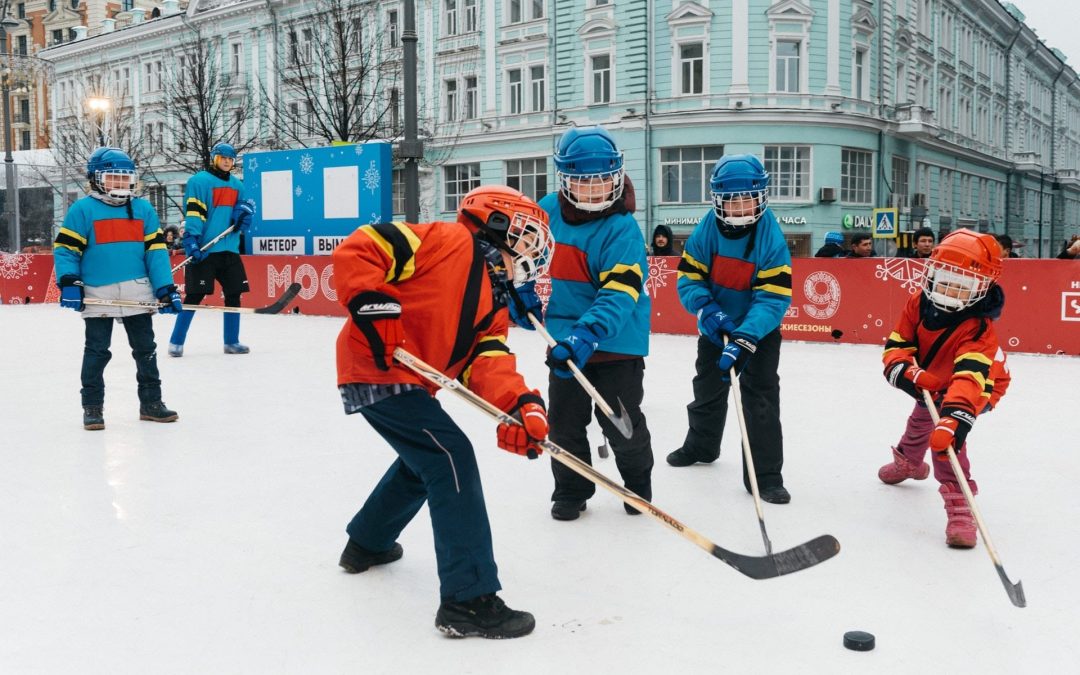Youth hockey is virtually a rite of passage for Canadian children.
Just visit any of the country’s thousands of local arenas on a Saturday morning, and you’ll see bleary-eyed parents hauling oversized equipment bags, lacing up tiny skates and spilling coffee as they leap from their bleacher seats to yell, “Shoot it!”
My two boys play for a noncompetitive affiliate of the world’s largest amateur hockey organization, the Greater Toronto Hockey League.
Besides the on-ice fun, the friendships that flourish among teammates and parents and the benefits of physical activity, getting involved in hockey has helped our family adjust to life as immigrants in Canada.
There’s a lot for us to love about hockey season.
A couple of seasons ago, I started volunteering as a team manager. While I’m not coaching material, I knew I could help by keeping up with the team calendar, managing the budget and keeping parents informed about practices and games.
Whenever one of the assistant coaches was unavailable, I helped on the bench.
In order to serve in this capacity, I had to get a police background check. I had to complete a webinar about respect in sports. And I had to learn a lot about gender expression and identity.
Maybe you’re wondering what those last parts have to do with managing a youth hockey team. I know I did.
But here’s the thing: If you are working or volunteering with children and youth, you are virtually guaranteed to be serving around kids who are transgender and gender nonconforming (TGNC).
Being TGNC typically involves living with the sincere feeling that one’s gender doesn’t match the sex on one’s birth certificate.
It may mean identifying as transgender, questioning, nonbinary or even agender. It may mean going by a different name, using different pronouns and changing one’s appearance.
It almost always involves living with a sense of incongruity, vulnerability and fear of discrimination.
The American Academy of Pediatrics has reported that, because of factors like bullying, discrimination and rejection, trans youth are substantially more likely to attempt suicide than those who don’t fall under the umbrella.
These factors threaten trans youth on athletic teams too. Research conducted by the Human Rights Campaign has found that 84% of respondents have witnessed or experienced anti-LGBTQ attitudes in sports, and that 82% of trans youth don’t feel safe being themselves around coaches and teammates.
The Ontario Hockey Federation (OHF), which oversees youth leagues like the one where my sons play, took these factors into account when they developed training around understanding discrimination based on gender identity and expression.
As a volunteer, one of my jobs was to make sure the kids in our league felt safe, respected and welcomed.
To prepare for this job, I learned about some of the different components of human identity – gender expression, gender identity, assigned sex and attraction.
I learned how these components are different from one another and how often people conflate one with the other. I learned about how important it can be to respect a person’s pronouns.
I was reminded along the way that my objective wasn’t to change anyone’s opinion, but to ensure a safe and affirming environment.
I learned lessons I should have learned a long time ago – lessons about protecting the vulnerable and treating them with the dignity they deserve as people created in the image of God.
Somewhere along the way, it occurred to me that this type of training isn’t only for hockey coaches.
Church volunteers – especially those serving alongside children and youth – could benefit from learning these lessons too.
I don’t think I’m being unreasonable when I suggest that churches should value the lives of trans youth as highly as the Ontario Hockey Federation does.
In addition to training tens of thousands of its adult volunteers, the OHF also developed policies around addressing trans players by their proper name and pronouns, respecting their privacy and allowing them access to locker rooms corresponding with their gender identity.
Measures like these make life better and safer for vulnerable youth.
If a volunteer hockey manager can learn about how to counteract bigotry and discrimination in the locker room, why can’t a church volunteer learn similar lessons to use in the youth room or the Sunday School classroom?
By some measures, churches are even worse for LGBTQ youth than sports teams.
A 2018 study conducted by West Virginia University found that LGBTQ youth are 38% more likely to have had suicidal thoughts when faith is an important part of their lives.
Grim statistics like these made the OHF take a hard look at its policies. They asked the question, “How can we ensure hockey is for everyone?” and they made changes.
How many churches and denominations are willing to demonstrate the same wisdom and compassion?
Editor’s note: This article is part of a weeklong series. Previous articles in the series are:
When You Need Christ’s Love, Leave It to The Samaritans by Paige Hardy
Court Cases Foreshadow Dangerous Times for LGBTQ Equal Rights by Don Holladay
Unsure About Accepting LGBTQ Folks? God Gave You the Keys by Jim Dant
The Experience of Christian Parents of a Christian Gay Child by Greg and Kelly Otis
Crossing Chasm That Seemingly Divides Bible, LGBTQ Loved Ones by Preston Clegg
After 20-plus years in Baptist ministry, Rev. Junia Joplin (she/her) now serves on the clergy team at the Metropolitan Community Church of Toronto – a vibrant, inclusive, and progressive faith community and human rights church. Junia is either a basic suburban hockey mom or a sign of the apocalypse, depending on who you ask. She is a member of the Good Faith Media strategic advisory board.


